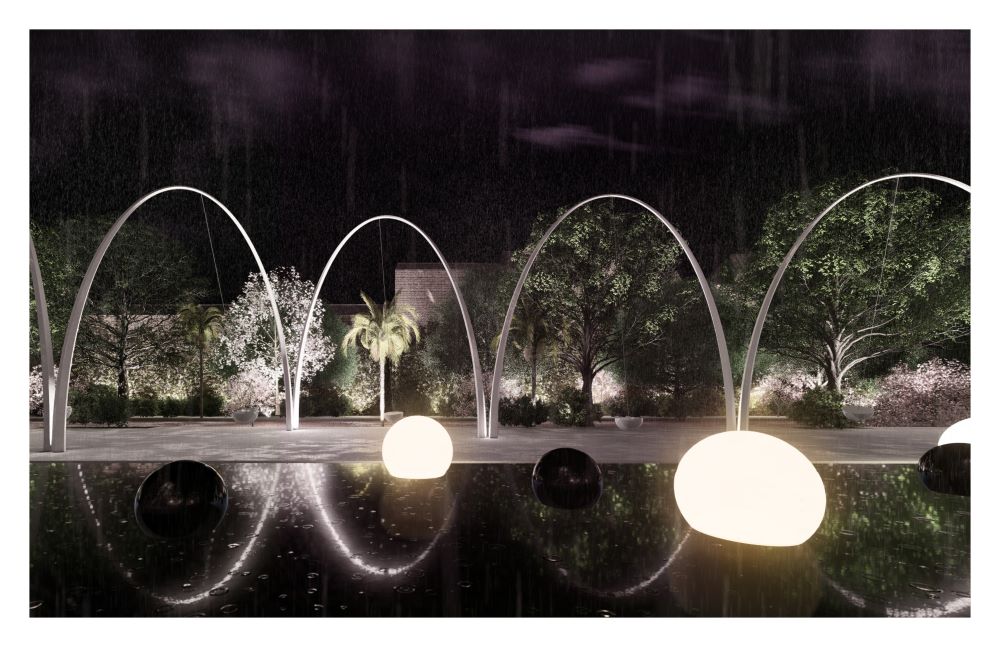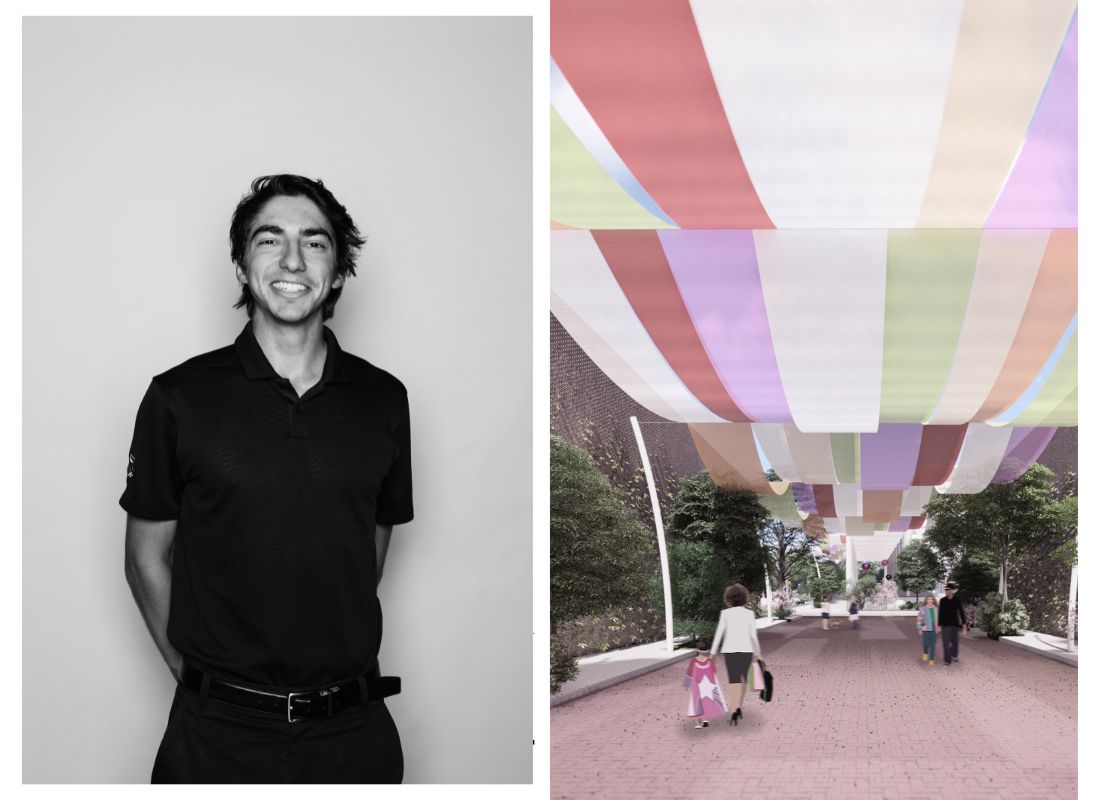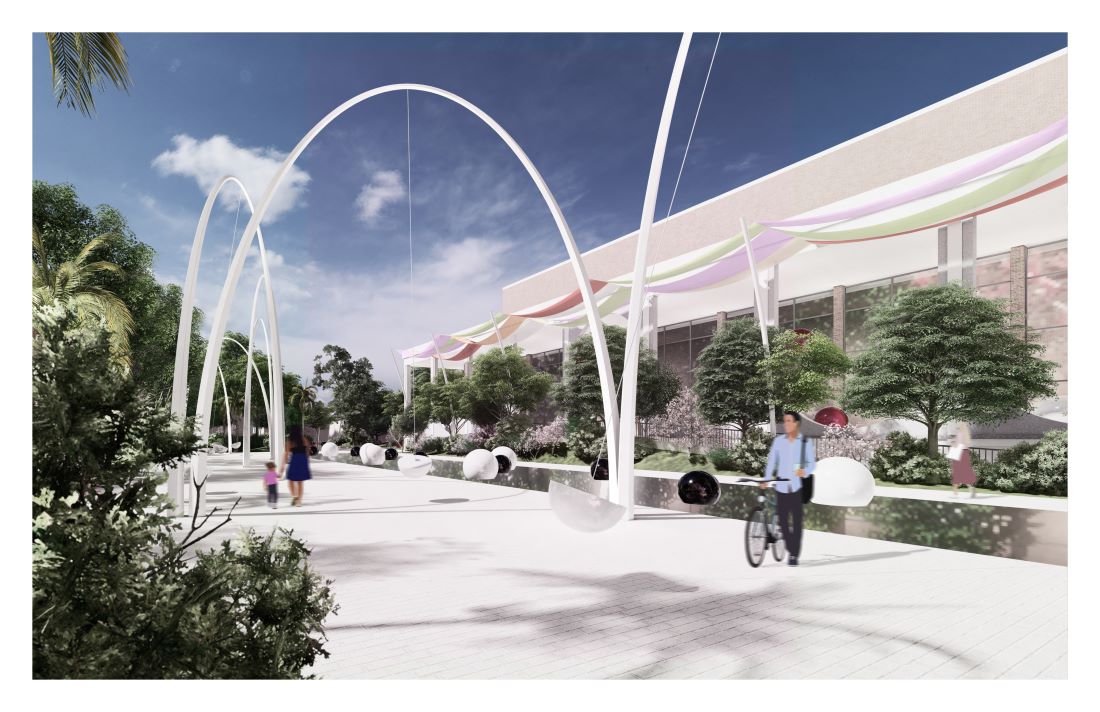
A student at Savannah College of Art and Design, Gabriel Velasco, has been awarded the Emerging Landscape Architect of the Year at the 2023 BLT Built Design Awards for his work on Octavarium. In this interview, we’ll delve into Gabriel’s journey, tracing it from his roots in Brazil to his current studies in the United States. We also discuss Octavarium, from its sustainable design principles to the emotions it seeks to invoke in those who experience it. Gabriel’s vision is one of reflection, where visitors are guided to contemplate the fleeting nature of life.
This conversation will take you on a journey through Gabriel’s creative mind, as he redefines both landscapes and the way we view life. Join us in this interview and catch a glimpse of the bright future ahead for this rising star in landscape architecture.

Can you tell us a bit about your background and studies? How did design come to have such an important role in your life?
I grew up in Brazil, with a family-driven childhood, learning how to be honest and dedicated. Moving to Savannah, in the U.S., I started my career at Savannah College of Art and Design (SCAD), where I conquered a B.F.A. in Architecture and where I am currently pursuing an M.Arch. As an artist/athlete, the blend of two dreams became a reality, and I represent both, from classrooms to championships. Design became a lifestyle when I noticed that it is much more than completing assignments or projects, is the search for answers in your personal life. I believe that designing in the architecture field incorporates empathy in different degrees, for people, for senses and for time.
What was the inspiration or philosophy behind Octavarium? How did you choose the name?
Octavarium is a project that blends the lines of the built environment. The woonerf proposal is a study of an urban strategy for the neighborhood, the garden as a conceptual landscape exploration, the entrance renovation as the architectural language of the project, and the spheres exhibition as the step toward interior installation. The project intention started after analyzing the urban fabric of the city of Savannah, studying the layout of the squares since 1733, when the city was founded. The main cemetery, located downtown, was the first square out of the proposed layout, with the objective of celebrating death. With that, the Jonny Mercer Theater is located between the same streets, being also out of the layout, giving the contrast of celebrating life.
Octavarium focuses on the influence of time on our life experiences, which is shown using spheres as the life cycle and swings as time itself. Can you tell us more about this vision and explain the details of how you incorporated it into your design?
Since the intention is to celebrate life, to contrast against the cemetery, I started to reflect about elements that drives human existence, asking myself questions about the purpose of living. Understanding that humans are aware of death, our journey ends where it begins, we are born at some moment in time, and we experience death at some moment in time. That process is something out of our control, we can only choose our paths during our existence, arching around a sphere, until we reach the starting point, and ending where we began. The swings element represents how humans are supposed to perceive time, where to get in and out the swing must be static in the present, than swinging back and forth between future and past.
How did you incorporate sustainable design principles into Octavarium?
The project adapts sustainable communities, green plazas, and human well-being. The woonerf proposal transforms McDonough St. into a gathering plaza, with commercial and residential developments. Octavarium also serves as a connection point between downtown Savannah and the plans for west expansion of the city. The use of Elbert Square also maximizes the use of the size, proposing a renovation of the square to its original size.
What do you hope visitors will feel or experience when they interact with your creation?
Octavarium was designed to be a moment of reflection, where people would interact with each part of the project, receiving guidance and awareness about decision-making towards being present somewhere in time. Life is short, a warm moment, death is a long cold rest, we get your chance to try in a twinkling of an eye. Families, friends, and individuals will experience in peculiar ways, some spheres are bigger than others, some spheres are buried, and some spheres are over water, each sphere represents different moments in life, dictated by time.
What were the major challenges faced during the design process and what did you learn from the whole project?
When the project was introduced to me, the main challenge was to combine urban design with architectural purposes, then stretching even more towards landscaping and interior installations. I also found myself reflecting on my moment in time, my priorities, and my reasons to live. The mental challenge of this project was to organize the story I wanted to portray with an architectural language that would adapt humans to the site’s program. With that, the main lesson that I took from Octavarium is about understanding why we do things that we do, and how can we make decisions that would interfere with our future. This project also gave me an opportunity to think rationally, considering life through facts and transforming them into emotions.

Congratulations on winning the Emerging Landscape Architect of the Year prize! How does it feel to be recognized for your hard work?
It is an honor to be part of the Built Design Awards! Receiving the Emerging Landscape Architect of the Year is amazing, it is always wonderful to see hard work paying off. I learned architecture through emotions, being taught to incorporate feelings and empathy into my projects, and Octavarium has its own personality. I also feel honored for the appreciation of my work related to what the project means, to understand what is the design’s purpose.
After the success of Octavarium, what are your plans for the future? Where would you like to see yourself in a decade?
Swinging in the future, I see myself exploring the world, spreading ideas to evolve into moments fulfilled with emotions. Time passes equally in the physical world, architectural concepts and stories are immune to aging, I believe I will be studying, reflecting, and experiencing the built environment during my period in time. As I grew in this field, architecture shaped who I am, my goal is to design the moment for someone else to find their place in time.